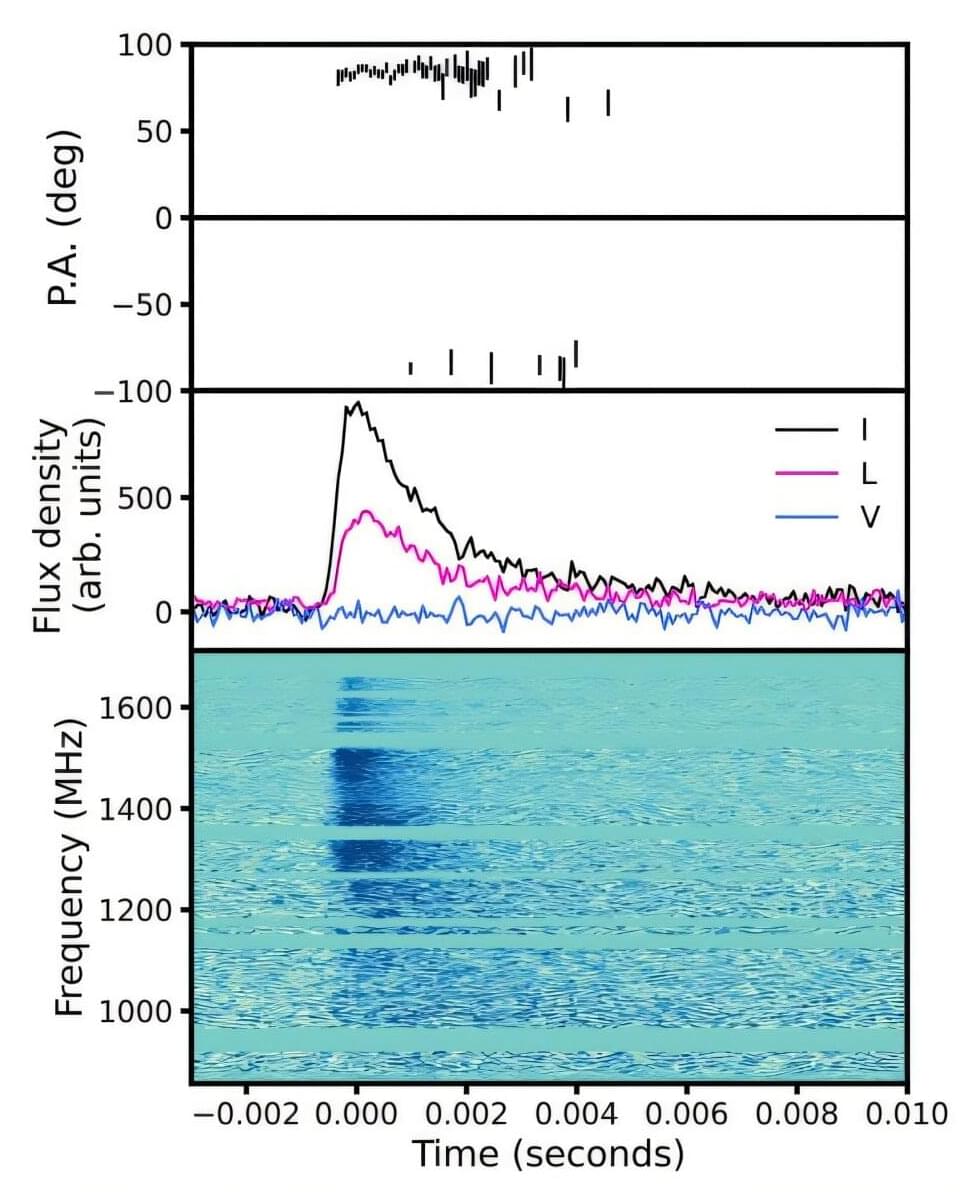Using the MeerKAT radio telescope, an international team of astronomers have discovered a new fast radio burst, which received designation FRB 20240304B. The measured redshift of FRB 20240304B indicates that it is the most distant fast radio burst known to date. The finding was reported in a research paper published August 3 on the arXiv pre-print server.
Fast radio bursts (FRBs) are intense flashes of radio emission that last only a few milliseconds and showcase the characteristic dispersion sweep of radio pulsars. To date, the physical nature of this mysterious phenomenon remains unknown; however, astronomers consider a variety of explanations ranging from synchrotron maser emission from young magnetars in supernova remnants to cosmic string cusps.
The vast majority of FRBs have been detected at relatively low redshifts of below 0.5. Therefore, their distribution at higher redshift is still poorly studied. That is why astronomers are especially interested in finding new high-redshift FRBs, as they can offer important clues about galaxy formation when the universe was a few billion years old.
